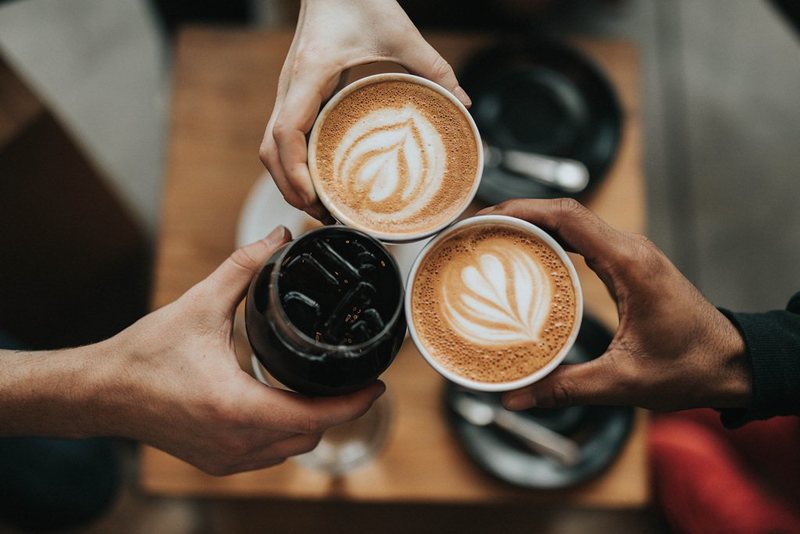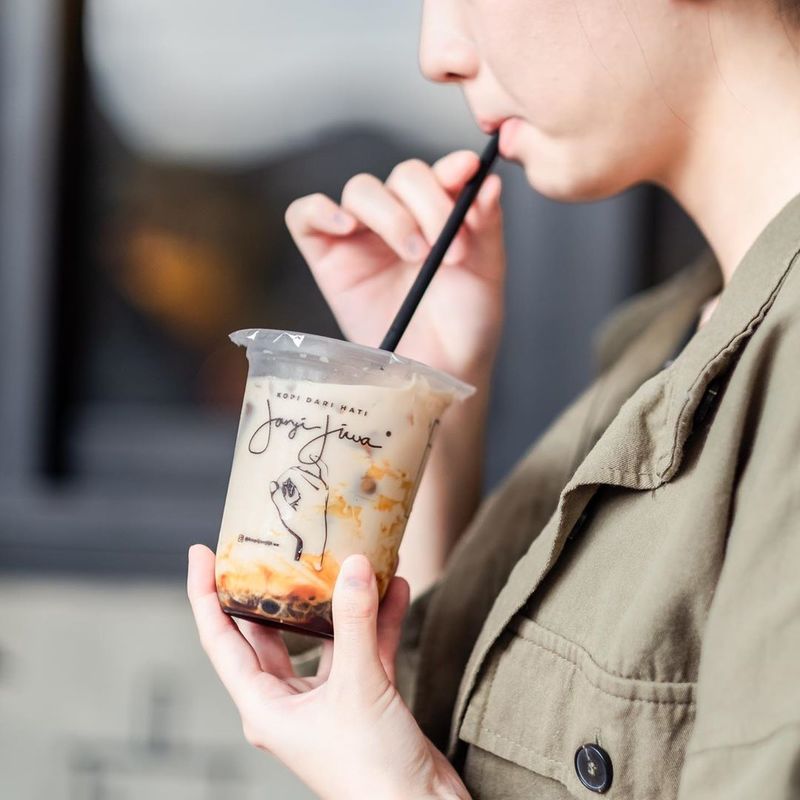
Coffee shops are a great place to grab your morning brew, catch up with pals and get some work done. There are many reasons to love coffee shops, let’s say, for having a great taste from your favourite coffee shops, looking for good vibes and being connected with friends, for example. And when you put that as a regular basis, it triggers people—or maybe yourself—to start their own coffee shop. But there is something you need to know about the phenomenon of coffee shops in Indonesia.
The coffee shop and coffee beverage business in Indonesia is booming in the recent years, becoming an emerging business that appears like fungus in the rainy season. This can be seen from the significant increase in the number of coffee shops in the past three years as well as in the domestic coffee consumption.
A leading business solution provider company in the form of goods and services in the HOREKA (hotels, restaurants and cafes) industry, Toffin collaborated with MIX MarComm SWA Media Group magazine released a research showing that the country has 2,950 coffee shops in August 2019, almost tripled compared in 2016 which was only 1,000 outlets. The research only encompassed franchised outlets in big cities, not including both modern and traditional independent coffee shops in other regions.
“This research was created to meet the needs of business industry players because among the existing coffee industry in the country, especially in the real or downstream sectors, there’s no research or reference on how to build a coffee shop business. That can be a market landscape, a map of business competition, sales and marketing strategies also operation strategy. We hope that with this research, the coffee business can grow together, not only in the downstream but also in the upstream sector, because without turning a blind eye the coffee business in the two sectors are indeed developing where as described in our 50 to- 60 pages research,” says Ario Fajar, Head of Marketing at Toffin.
Indonesia’s domestic coffee consumption also continues to rise. Indonesia’s Coffee Consumption Annual Data 2019 released by the Global Agricultural Information Network shows projections of domestic consumption (Coffee Domestic Consumption) in 2019/2020 reaching 294,000 tonnes or around 13,9 per cent compared to consumption in 2018/2019, which reached 258,000 tonnes.
Even so, on a per capita basis, Indonesian people’s coffee consumption is still relatively low compared to other countries, which is only about one kilogram in 2018. Compared with Vietnam whose income level is below from Indonesia, the neighbour country coffee consumption reaches 1,5 kilograms per capita in the same year. Also, Brazil reaches around 6,5 kilograms per capita.
From the business side, Ready to Drink (RTD) Coffee product sales increased significantly. According to Euromonitor’s data, in 2013, retail sales volume of RTD Coffee Indonesia reached 50 million litres, but it reached 120 million litres in 2018.
The 4-Wave Coffee Industry
Coffee shop players in Indonesian divide the industry’s journey into four big waves, as Toffin marked based on the momentum of the phenomenal influx of coffee shop brands into the industry in Indonesia.
The first wave (1980 – 1990s) was a decade where most Indonesian enjoyed instant coffee (in sachet packaging) provided by four national brands: Kapal Api (1927), Kopi ABC (1985), Nescafe (1971) and Torabika (1977) and non-branded brewed coffee. Most RTD Coffee were available in traditional coffee shops and a few of modern coffee shops, like Dunkin’ Donuts (1985), Olala (1990) and Excelso (1991).
The second wave started in 2000. At this point, the ritual of drinking coffee in coffee shops went from a trend to meet functional needs (drinking coffee to refresh) to meet emotional needs, where enjoying a glass of coffee in a modern outlet is perceived as an increase in prestige. This period was marked by the entry of USA’s international chains big brands Coffee Bean (2001), Starbucks (2002), Segafredo (2002). Local’s Anomali also enlivened the market in 2007. Also, in this era, Peranakan-Chinese coffee shops or called Kopitiam started to enter the market.
By the third wave in early 2010 to 2015 appreciation for coffee increased, which was evident by the presence of artisan coffee shops, such as Tanamera in 2013. Consumers not only enjoy the prestige of drinking coffee in cafes, but have become more interested in the process of producing a cup of coffee. The presence of coffee machines became a visual reference for consumers and businesspeople became increasingly aware of the sexy side of coffee shop business. Many new brands have begun to enter the market. Indonesian hair stylist Johnny Andrean entered the market with his own brand, J.CO Donuts & Coffee (2013), McDonald’s with the brand McCafe (2014) and Lippo Group brought Maxx Coffee (2015).
2016 marked the fourth wave and an era where the market size of coffee shops has increased very significantly. A myriad of new coffee brands pop up , with each one opening tens to hundreds of branches in various cities. To grab the younger segment (school children to young executives), coffee shop players started coffee-to-go shops, which are small shops that provides fresh RTD Coffee at affordable prices to be taken home or away. Kopi Kenangan, Janji Jiwa, Fore and Tuku are the brands which considered as the pioneers for coffee-to-Go concept. The presence of the ride platform hailing GoFood and GrabFood helped drive the boom of this new concept.
In line with the booming offer of quality cafe-style RTD Coffee products by coffee-to-go outlets at more affordable prices, the novice coffee consumers continues to increase. This wave also brought more innovations, including in flavours of milk coffee products, easier access to purchase (order through application, delivery using ride hailing, pay via e-money) and innovation in marketing strategy, for example, progressive retail marketing and influencer marketing.
The Prospect Indonesia’s Coffee Shop Business in 2020
With the current number of outlets and the assumption of average sales per outlet of 200 cups per day, as well as the price of coffee per cup of IDR 22,500, Toffin estimates the market value of coffee shops in Indonesia to reach IDR 4,8 trillion per year. A promising premise to open up a coffee shop.
This growth projection in 2020 is also based on consumer insights collected through an online survey of young (generation Y and Z) coffee enthusiasts in Indonesia. The survey results, among others, showed that the coffee-to-go shops providing quality RTD Coffee at affordable prices is in high demand by this currently population dominating generation. In the past year, 40 per cent of this generation bought coffee drinks from this type of coffee shop. With an average expenditure allocation for coffee drinks (share of wallet) of IDR 200,000 per month, this type of coffee shop business is expected to grow significantly in the coming years.
And through in-depth interviews with stakeholders, there are seven factors driving the growth of the coffee shop business in Indonesia, namely: the habit of hanging out while drinking coffee.
- The habit of hanging out while drinking coffee
- Increasedconsumer purchasing power, the growth of the middle class and the price of RTD Coffee in modern shops that are more affordable
- Domination of Indonesia’s young population (Generations Y and Z),which creates a new lifestyle out of consuming coffee
- Social media makesit easier for coffee shop entrepreneurs to conduct marketing and promotional activities
- The presence of a ride hailing platform (GrabFood and GoFood) helps facilitatesales process.
- The low entries barriers in the coffee business which are supported by the availability of raw materials equipment (coffee machines) and resources to build a coffee shop business
- Relatively high profit margin
Seeing those driving factors, some coffee shop business players positively share their responses. Andreas Chang, CEO of Tahta Coffee, even believes that the market is still strong because his five-year study shows that RTD Coffee consumption has tripled. “This gap is still very far away. So, this business is still emerging,” Andreas commented.
While Edison Manalu, CEO of Harvest Group, estimates that growth will remain in double digits. “Local coffee network and small coffee shops in remote areas indicates how big the coffee business in Indonesia is. In growth, it can reach double digits. Because of that, harvest enters this market by launching Harvest Express,” the CEO said.
Coffee-Milk Product Development, Most Important Feature for Gen Y and Z

Toffin’s research also says that around 60 percent coffee consumers nowadays love coffee-milk blend for one main reason: they can try new flavours, in addition to attractive promotions.
“To become a trending coffee shop, we need maximise innovation of our LTO (limited time offer) new menu to encourage people to talk about our product and get them to visit again and again. This typical Indonesian phenomenon is still needed,” explained Sarita Sutedja, Founder Upnormal Coffee Roaster.
Alvinta Purba, Founder of Kopi Kecil, also said that, “The current trend of milk-coffee makes the market of coffee shops grow significantly.”
Palm sugar coffee has become the most preferred variant of Gen Y and Z in 2019, followed by cookies and cream, avocado, matcha and yogurt. For next year, cookies cream coffee-milk is estimated to top the list in place of the palm sugar coffee. While coconut milk coffee will be at the bottom list, after cheese, regal, grass jelly and soybean milk coffee, as the research says.
Indonesian traditional flavoured coffee-milk, like cendol, klepon, es doger are also tantalising. Research says that around 85% generation Y and Z are interested to buy them.
The Ultimate Checklist to Open Coffee Shops in Jakarta
Here we go! Your business plan for starting a coffee shop should incorporate these six key success factors, as Toffin shares to you:
- Innovative product: the flavours must meet the consumers’ taste
- Offervalue for money but remain competitive
- Strategic location
- Cosy and cleanvenue
- Good marketing and innovative promotions, such as influencer marketing strategy
- Innovative in selling and distribution, using ride hailing platform.
And also, don’t forget to learn from the successful players.
“A varying menu is very important in order to reach all types of consumers and can attract new consumers. Even though ice coffee-milk is still a mainstay, you have to see that with the consumer presentation of 60 per cent, as many as 20 per cent is original coffee consumers and the other 20 per cent is other menu consumers,” according to James Prananto, COO of Kopi Kenangan.
“Constant innovation is the key of our success. But we must continue to maintain original coffee as our signature,” Sylvia Surya, Founder of Kopi Soe, remarked.
“McCafe is always looking to improve consumer visits. We do it by launching new products around three to four times a year to keep consumers engaged in relation to what’s new from us,” Yunita Hidayanti, Associate Director of Operation & Brand Extension McCafe.
Elisa Suteja, Co-Founder of Fore stated that “Fore targets active consumers who already use smartphones. This segmentation is right, because the application is not only used as a booking tool but also a more efficient way of buying,”
Well, there is no one secret to a successful coffee shops; in fact, most secrets in business boils down to hard work, extensive experience, or luck or a combination of all three. Good luck to you!







